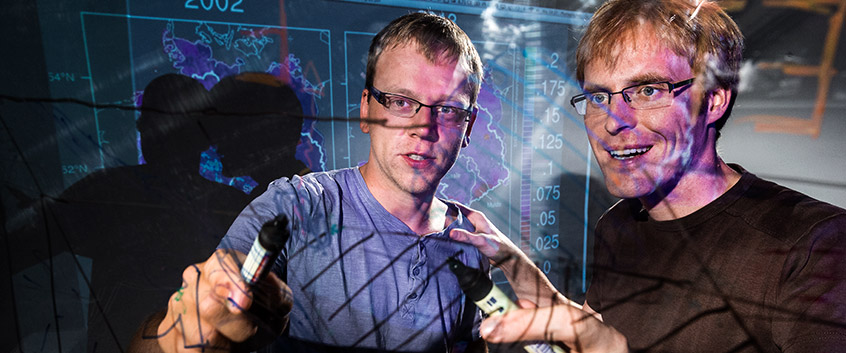
 Modelling and Monitoring
Modelling and Monitoring
Our environment is changing through global change –the question is where and how exactly? What exactly are the local and regional impacts of climate change? Will for example the groundwater filter function of soils be impaired? Will soils become infertile? Will plant and animal species be able to locate and move to new habitats? For accurate predictions, data collection over a longer period is lacking, which would document any changes and enable predictions about future developments. The data alone do not lead us much further. They need to be assessed, understood and incorporated into models.
Nowadays, environmental research is inconceivable without the implementation of complex computer models. The issues in terrestrial environmental research are very diverse (e.g. impacts from the loss of biodiversity, water management in water-scarce regions, the efficiency of renewable energies, resource efficiency or the impact of chemicals in the environment on organisms and species communities). And yet scientists are often faced with similar methodological issues in modelling – it is not uncommon that an explicit coupling between the various compartments needs to be simulated, although understanding of these interactions is still rudimental or for example that processes taking place on different spatial and temporal scales need to be integrated into a single model.
In so-called Integrated Projects (IPs) scientists work on and investigate the following themes (Coordination UFZ):
Observatories and Experiments
